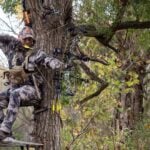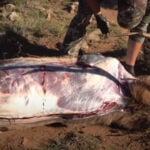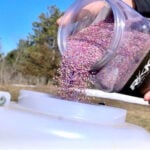A spotting scope is a compact telescope intended for distant observation and is best served when magnifications are needed beyond the range of average binoculars.
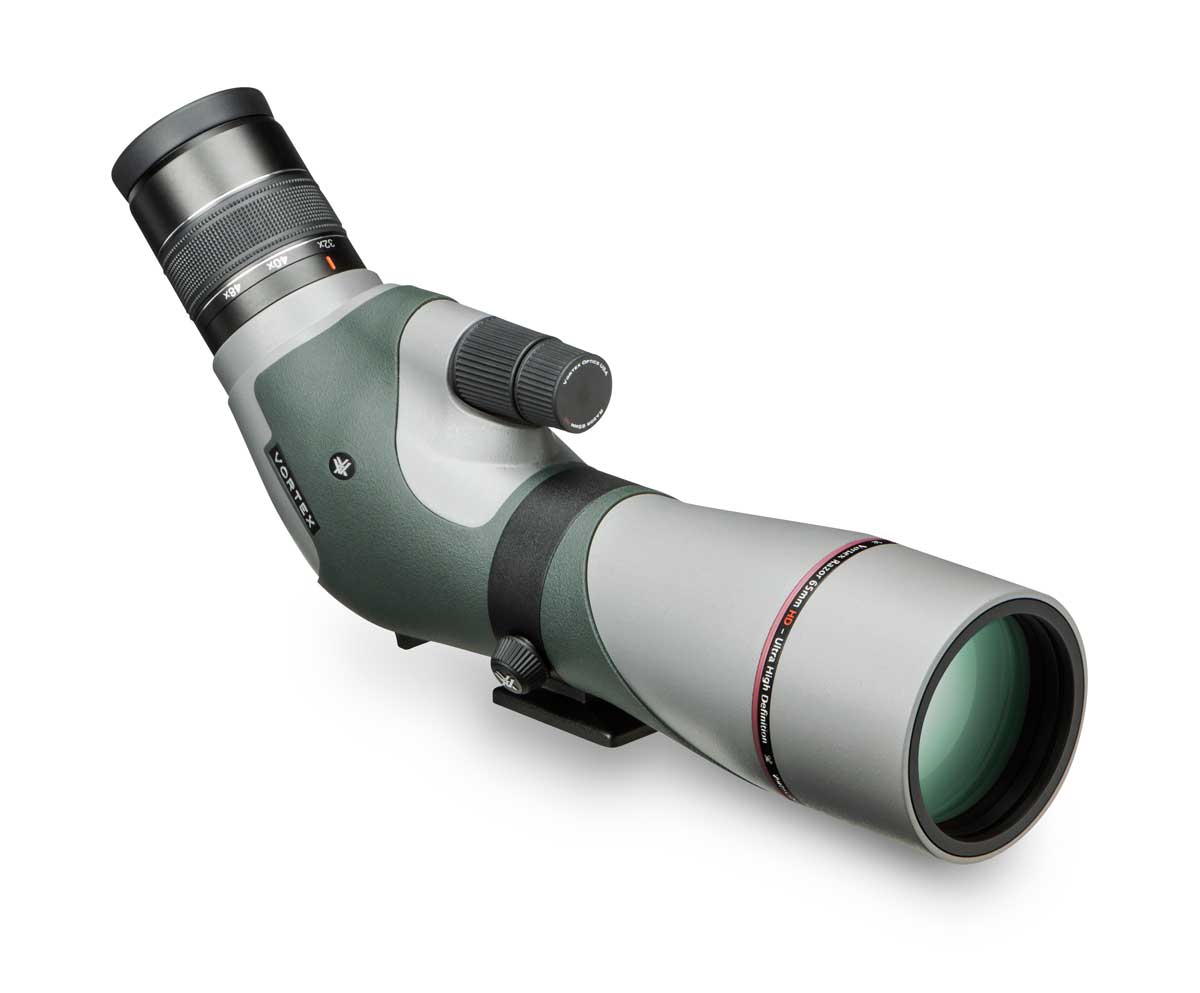
They’re fairly light in weight and pack a powerful punch when used in hunting applications. Most avid bowhunters have them in their arsenal of equipment and consider them a staple when taking to the field.
If you have not brought this companion on a hunt, chances are at some point your binoculars will be inadequate due to lack of clarity or magnification. A spotting scope is a must when hunting big country and judging trophy potential at great distances. Let’s look at some of the basics of spotting scopes and how to use them in the field.
One of the primary advantages of a spotting scope over just binoculars is that a scope can allow you to view big game animals from afar without disturbing their daily routines.
All hunters can agree that it’s more advantageous to avoid bumping animals and staying concealed when glassing prime hunting country. A spotting scope is a great tool to avoid disorderly conduct on the mountain.
The spotting scope will enhance your productivity in the field, you can pick apart more country and unfold more details. Other benefits for bowhunters is spotting arrow groups at the range or scanning the hills for springtime sheds.
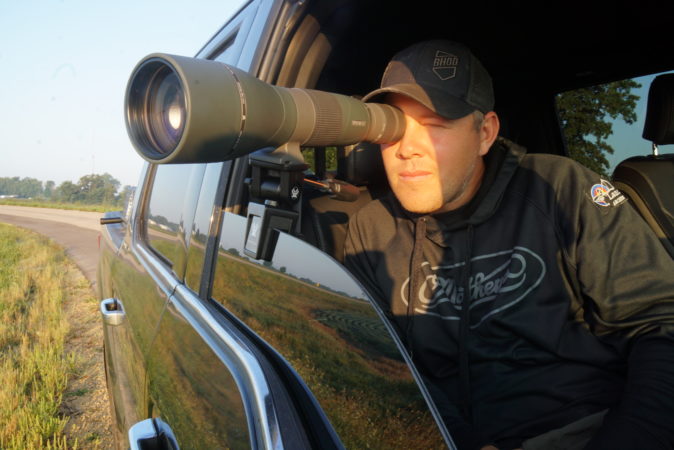
There are a few differences in spotting scope models and designs to pay attention to. Most spotting scopes come with zoom eyepieces in either 15-45x or 20-60x magnifications. The scope goes hand-in-hand with a compact tripod enabling you to view wildlife beyond the reach of your trusty binoculars.
Depending on the model and design of the spotting scope, the magnification can range from about 10x to 250x, using either fixed or zoom eyepieces.
The basic body designs of spotting scopes boil down to straight or angled. Angled scopes have an eyepiece that is 45º from the barrel axis and the straight scopes have the eyepiece and barrel parallel. Angled scopes allow for a shorter tripod and can be a little easier to share with a hunting buddy when studying a trophy animal from far-off.
Straight spotting scopes are a little more user-friendly and make it easier to view animals off the ground. You don’t have to crank your neck to look through the eyepiece and so more folks would probably rather invest in the ladder when hunting application is the main concern.
A recently new addition to spotting scopes is capturing amazing photos and video through your scope as a telephoto lens. Depending on the brand and model, most come with accessories to fit your camera.
If you’re looking at snapping photos then make sure to have a sturdy tripod for stability, and shutter speed options for optimal exposure. Video can be done as well; this is known as digiscoping.
This is where the spotting scope utilizes an optical beam splitter for simultaneous visual and electronic monitoring. This accessory lets you view images on a camcorder or digital camera in amazing detail.
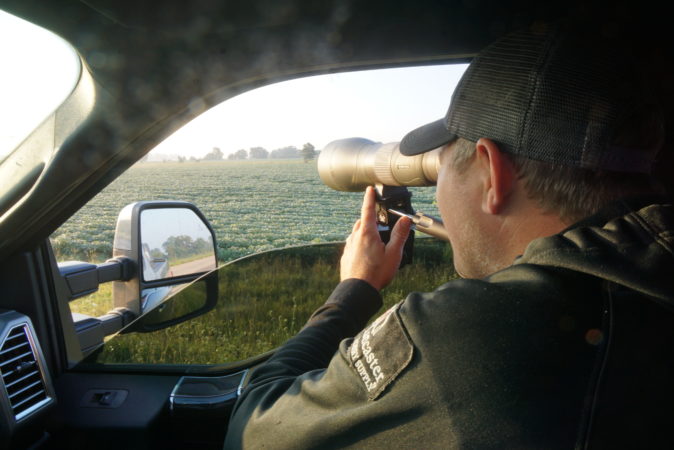
This is a newly introduced element and most companies offer the proper accessories based on your scope and camera model. Imagine being able to film big game animals from miles away in crystal clear magnification. Game changer!
The best approach to utilizing a spotting scope when hunting is to have both binoculars and a scope. Utilize the binoculars to locate your quarry, then use the scope to have a closer and more concise image of the target.
Due to a scope’s lack of field of view, you’ll want to use your binoculars as your primary glassing tool. Once you’re ready to really examine a potential trophy, use your scope at its lowest power and widest field of view and move in from there.

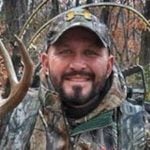 By
By 